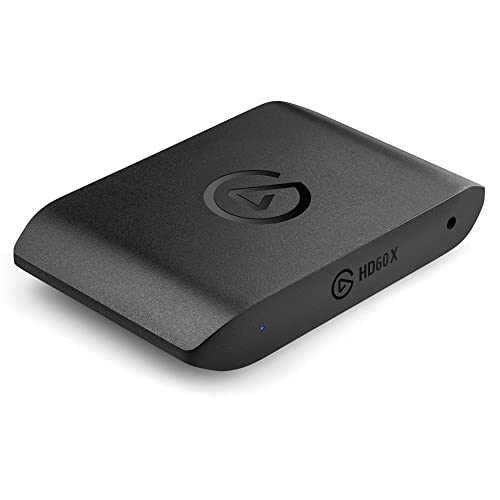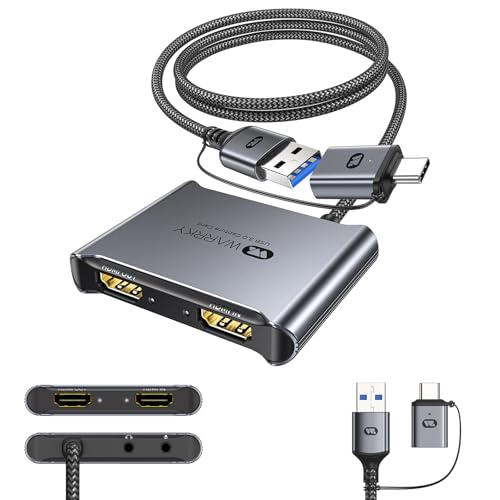Understanding Capture Cards: What They Are and Why You Need One
What is a Capture Card?
A capture card is a device that enables you to capture video and audio from your gaming console or computer, allowing you to stream or record your gameplay. This is particularly useful for gamers who want to share their experiences live or create content for platforms like YouTube or Twitch. Essentially, it acts as a bridge between your gaming device and your streaming setup, ensuring high-quality output.
Why Consider a Capture Card?
If you are serious about streaming or recording gameplay, a capture card is essential. It offers superior quality compared to software-only solutions, particularly when it comes to performance and reliability. By using a capture card, you can ensure that your streams run smoothly without compromising the gaming performance, as it offloads the processing power typically required for capturing video.
Choosing the Right Capture Card: Key Features to Consider
Resolution and Frame Rate
One of the first things to look for when choosing a capture card is its support for resolution and frame rate. For most streamers, capturing in 1080p resolution at 60 frames per second is the standard for high-quality visuals. If you’re aiming for 4K gaming or higher frame rates for smoother motion, you’ll need to invest in a capture card that supports these features.
Input and Output Options
Different capture cards offer various input and output options. Make sure the card you choose is compatible with your gaming platform, whether that’s a console like PlayStation or Xbox, or a PC. Look for HDMI inputs, as these are the most common for modern devices. Also, check the output options to ensure you can easily connect it to your streaming setup, such as a PC or direct live streaming device.
Latency and Processing Speed
Latency can make or break your gaming experience, particularly in competitive situations. Opt for a capture card that is known for its low latency, which means less delay in rendering what you are playing on-screen. Additionally, a card with good processing speeds will help ensure that there is no lag between your movements and what is displayed on the stream.
Software Compatibility
Not all capture cards work seamlessly with every streaming software. Look for a card that is compatible with popular streaming applications such as OBS Studio, Streamlabs, or XSplit. Some capture cards even come with their own software, which can provide additional features like scene switching, overlay options, and more.
Portability and Design
If you plan to stream or record from multiple locations, consider a portable capture card. Compact designs are convenient for on-the-go content creation, such as gaming conventions or friends’ houses. Ensure its build quality is robust enough to withstand travel.
How to Set Up Your Capture Card for Seamless Streaming
Connecting the Hardware
To set up your capture card, start by connecting it to your console or PC using the appropriate HDMI cables. Once connected, ensure you plug the capture card into a USB port on your computer or into your streaming device. Make sure everything is securely fastened to avoid disconnections during streaming.
Installing Software Drivers
Most capture cards need specific drivers or software to function correctly. Follow the manufacturer’s instructions to download and install the necessary drivers. This step is crucial, as it ensures your capture card communicates effectively with your computer or streaming setup.
Configuring Streaming Software
Open your preferred streaming software and navigate to the settings to select your capture card as the video and audio source. You may need to adjust settings like resolution and frame rate to match what you want to capture. It’s a good idea to run a test stream to confirm everything is working smoothly.
Top Capture Cards for Gamers: Our Picks for Quality and Performance
Affordable Options for Beginners
For those just starting out, there are capture cards available that don’t break the bank but still provide excellent performance. Look for options that offer 1080p recording at a reasonable price. These cards usually offer all the basic features needed for new streamers without overwhelming complexity.
High-End Choices for Serious Streamers
If you are committed to producing high-quality streams or recording sessions, consider investing in a high-end capture card that supports 4K resolution and high frame rates. These cards typically come with advanced features, such as built-in encoding, which can provide an edge in streaming quality.
Tips for Maximising Your Capture Card’s Potential: Best Practices
Optimising Video Settings
Once your capture card is set up, explore the video settings in your streaming software. Adjust bit rates and resolutions to find a balance between quality and performance, ensuring your stream is both visually appealing and stable. Experiment with various settings to find what works best for your internet speed and personal style.
Maintaining Your Hardware
Keep your capture card in good condition by regularly updating its drivers and software. Physical maintenance includes safeguarding it from overheating and ensuring all connections are clean and secure to avoid transmission issues during a stream.
Engaging with Your Audience
Maximise the potential of your capture card not only through technical settings but by actively engaging with your audience. Implement overlays, alerts, and chat integration to enhance viewer interaction, making your stream more dynamic and enjoyable.



































